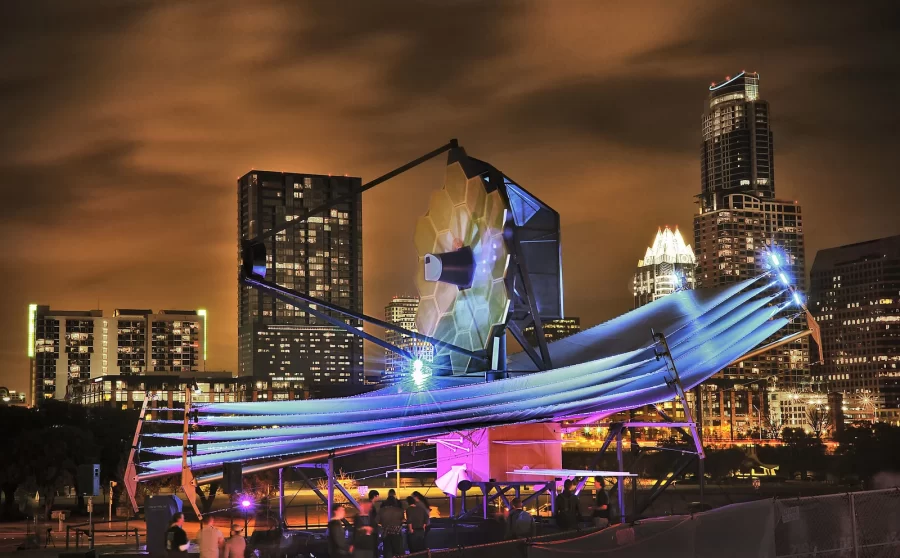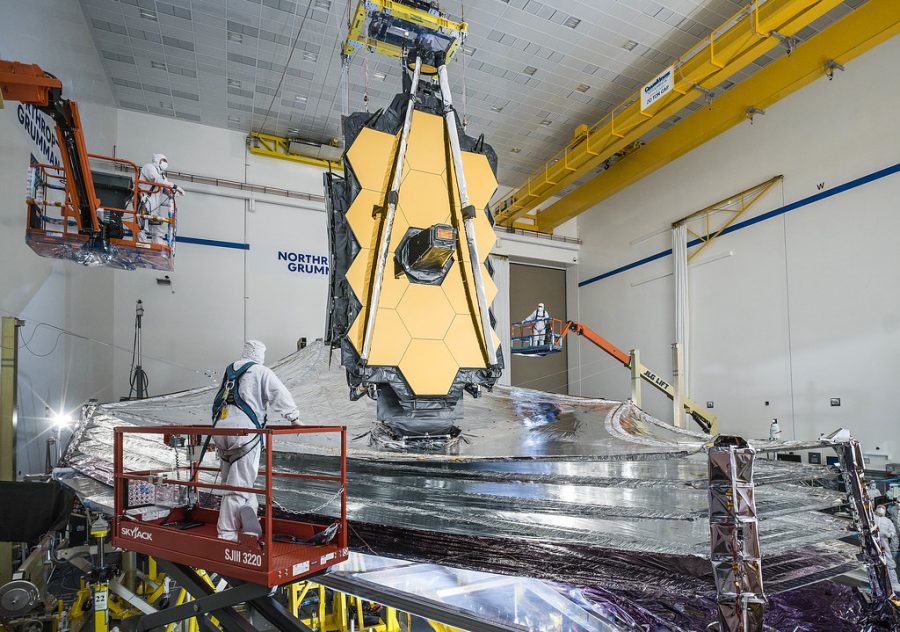The James Webb Space Telescope will launch the scientific community into the future by gazing into the past.
After 16 days at sea, 10 billion dollars, and 25 years of development, the Webb telescope arrived in the country of its launch, French Guiana. The Webb’s arrival last Tuesday, Oct. 12, marks just over two months until its launch on Dec. 18 aboard the European Space Agency’s Ariane 5.
In 1996, researchers predicted that they could launch the Webb in 2007 with a budget of $500 million. In reality, the project took 14 more years and cost $9.5 billion more than estimated.
Some who contributed time and resources to the Webb’s production sought resolutions to ongoing controversies about the universe.
“In my mind, it comes back to two big questions. Are we alone, and where did we come from?” said Peter Sooy, a member of the communications team for the telescope.
The Webb will observe the atmospheres of exoplanets to decide whether they contain evidence of the building blocks of life. Regarding Sooy’s second question, the telescope will allow scientists to analyze infrared rather than visible light. They will view the first-ever spark of the universe from 13.5 billion years ago.
“Looking at the universe in visible light is like going to a concert where you can only hear one note of the music,” said George Reike, an infrared astrology professor at the University of Arizona. “If you start listening to more than one note, you’ll find all kinds of really neat things that nobody knew about before.”
Infrared technology allows access to this symphony of discovery.
“That first light starts as visible light like we see with our eyes,” Sooy said. “It’s traveling through space, so the wavelength stretches out, and it goes from the visible into the infrared.”
Combining their efforts to make this infrared technology functional were NASA, the European Space Agency (ESA), and the Canadian Space Agency (CSA).
“All humans can use this telescope to learn and explore. It’s not only for one country or only for one group of scientists,” Sooy said.
This “worldwide telescope” is the successor to the Hubble Space Telescope. For 31 years, the Hubble served NASA as a vital research tool. However, considering the Hubble’s waning condition, experts deemed it time for a replacement.
One of the key differences between the Hubble and its successor is their accessibilities. Since the Hubble lacks infrared viewing and is in low Earth orbit, astronauts can visit for maintenance. However, the Webb is going to be orbiting the sun a million miles away at Lagrange 2.
“Because the Webb is going to be so big, sending another spacecraft up there would blind it with its infrared heat,” Sooy said.
Despite this setback, infrared technology is the primary merit of the Webb.
“That is an incredible advantage,” Reike said. “It means the telescope in space can be 1000 times more sensitive than the same size telescope on the ground.”
Advantages such as this caught the attention of the younger generation.
“Hopefully, we can learn some new things about how the world started,” said Carlmont freshman Sara Wilkinson.
The 5,800-mile voyage that the Webb finished last week was only a fraction of the million miles it has left to go. This journey is vast not only in physical space but in scientific discovery.
“This telescope is going to rewrite textbooks and hopefully inspire a lot of the younger generation to get into science,” Sooy said. “Hubble was my generation’s telescope. The Webb is your telescope.”














